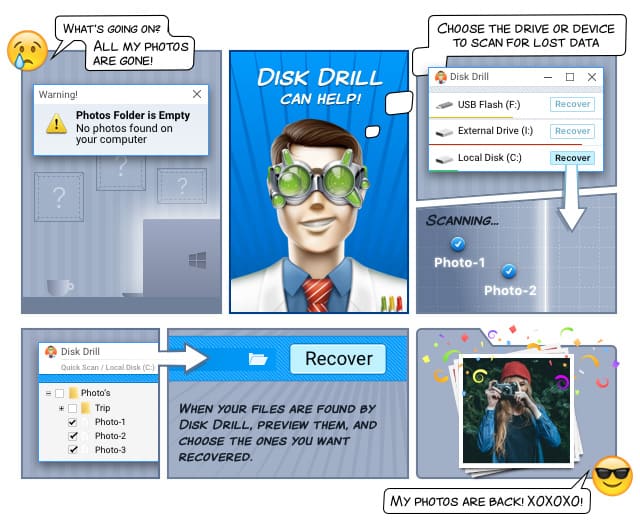What is EPS File Format

An .EPS file contains a PostScript program that describes an image or drawing, and an embedded low resolution image, which can be used for previewing. EPS stands for Encapsulated PostScript.
An .EPS file can contain both a vector graphics drawing and a bitmap image. Vector graphics drawings are based on mathematical constructs, which can be translated, rotated, mirrored, and can have other associated parameters – such as thickness, color, etc. – modified. Bitmap images use matrix data structures to represent a grid of pixels.
PostScript is a page description language created at Adobe Systems in the 1990s. It is a device independent language, mostly used in printing. It is also a Turing-complete programing language. This feature allows for the fact that most PostScript programs are created by computers, without human intervention.
PostScript is an interpreted language, with some interesting features such as garbage collection. The language lets you create powerful structures, based on the concept of array. However, it uses reverse Polish notation, which somehow makes it difficult to handle. Besides, as it is a stack-based language, the structure of the stack has to be considered when programming in it.
The simplified PostScript version used in .EPS files, makes them ideal for learning graphics programming. In addition, the EPS language has the benefits of being theoretically usable by any application using vector graphics, and of being usually compatible with old and new printers.
However, the EPS language has some downsides, as for example, it can’t handle transparency. Moreover, EPS files are somehow obsolete in the graphics business, where they have been replaced by the PDF format. But, they are still used in many other industries, such as embroidery, vinyl/laser cutting, signage, etc., where features such as transparency are not a necessity, and many old machinery is still in use.
How to Open EPS Files
There are many programs that can handle EPS files, amongst them:
- Adobe Acrobat
- Adobe Illustrator
- Adobe Photoshop
- Adobe Flash
- Autodesk AutoCAD
- CorelDRAW
- Ghostscript
- GIMP
- LaTEx
- FreeHand
- Libre Office Draw
- Mathematica
- MatLab
- Scribus
- Sketch
What is the Digital Signature of a EPS File
ISO 8859-1: %!PS-Ado
be-3.0 E
PSF-3.0
Hexadecimal: 25 21 50 53 2D 41 64 6F
62 65 2D 33 2E 30 20 45
50 53 46 2D 33 20 30
How to Recover Deleted EPS Files
Unintentional deletions are not uncommon in our present digital time. Fortunately, Disk Drill, a data recovery application developed by Cleverfiles, can help you to recover EPS files. Disk Drill has versions for Windows and Macs. It supports a wide variety of digital devices, such as internal and external hard drives, USB based drives, memory cards and more.
Disk Drill is available for free.
Steps for Recovering EPS Files Successfully
Once you have downloaded the installer, it is easy to recover EPS files. The few necessary steps are:
- Install Disk Drill by clicking on the installer’s icon. The program will provide you with a set of easy steps that you must follow.
- Open Disk Drill by clicking on the app’s icon. Disk Drill with detect all connected digital devices, and provide a list of them. Select the device that contains your .EPS file(s).
In addition, Disk Drill lets you perform EPS file recovery from image files. These files are bit-by-bit copies of original digital sources. As they are complete copies, they also contain deletions, and their use is common practice amongst Digital Forensics practitioners. In order to recover EPS files from an image copy, you must attach the file to Disk Drill, and do your EPS recovery in the same manner as you do with any other digital device. - Narrow the search by selecting the .EPS file extension from the “Preferences” menu. In this manner, Disk Drill will scan your device faster and more efficiently.
- Scan the selected device. In case of need, you can pause or cancel the EPS recovery at any time. You can also save the EPS file recovery session, and continue later on, without losing any of the work already done. This option is particularly useful when working with devices of large sizes, as they may require several hours to recover EPS files.
- Once the scan is completed, Disk Drill presents the results in the manner of a list. This list can be narrowed down by using the provided filters by date or size. If Disk Drill couldn’t find an .EPS filename, it will assign a generic name to the file created with the found data. A generic name has the form file001.eps.
- Select the .EPS file(s) that you need and retrieve it (them) to a folder of your choice.
Done with your EPS file recovery!

